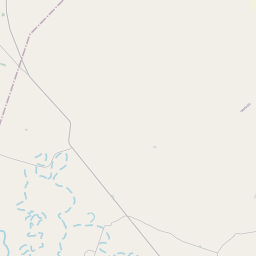New York, Texas & Mexican Railroad and The Community of Hungerford
Historical marker location:






Attracted by the State of Texas' offer of free land to railroad developers, a charter for the New York, Texas & Mexican Railroad was secured in 1880. Its major investor, John W. Mackay, made his fortune in the Nevada silver mines. His brother-in-law, count Joseph Telfener of Lombardy, Italy, arranged for the construction. Work began in 1880 on the 91-mile stretch of railroad track between Rosenberg and Victoria. The pasta diet of many of the Italian laborers lent itself to the railroad's nickname, the "Macaroni Line."
Telfener and Mackay established six stations along the line--Inez, Louise, Edna, Hungerford, Telfener, and Mackay and named them for themselves and family members. The community of Hungerford was named for their father-in-law Daniel E. Hungerford, who served as vice-president of the New York, Texas & Mexican Railroad. Not the successful business venture they had envisioned, the company was sold to Southern Pacific Railway in 1885.
With an economy based on farming and ranching, the community of Hungerford has continued to flourish over the years. Its origin is a reflection of the varied history of the railroad in Texas.
(Texas Sesquicentennial 1836-1986.)
As one of the most visible programs of the Texas Historical Commission (THC), historical markers commemorate diverse topics in Texas history, including: the history and architecture of houses, commercial and public buildings, religious congregations, and military sites; events that changed the course of local and state history; and individuals who have made lasting contributions to the state, community organizations, and businesses.
The discovery of oil in 1901 near Beaumont, Texas, sparked an oil boom that transformed the state's economy and led to the rise of the modern petroleum industry.
In 1846, the Texas legislature established Wharton County, named after brothers William Harris Wharton and John Austin Wharton, who were prominent figures in the Texas Revolution. The county was officially organized in 1848, with the town of Wharton selected as the county seat. The growth of the county was fueled by the development of the railroads, which provided transportation for agricultural products such as cotton, corn, and cattle.
During the Civil War, Wharton County was heavily affected by the conflict. Many of the county's residents supported the Confederacy, with several military units being raised in the area. However, the county also had a significant number of Union sympathizers, leading to tensions and conflicts within the community. After the war, the county gradually recovered and experienced economic growth, with new industries such as oil and gas exploration contributing to its prosperity.
Today, Wharton County is a diverse community with a strong agricultural base. The county is known for its rice and cattle production, as well as its oil and gas industries. It is also home to several historical sites, including the Wharton County Courthouse, which was built in 1889 and is listed on the National Register of Historic Places. With its rich history and thriving economy, Wharton County continues to be an important part of Texas's cultural and economic landscape.
Wharton County Timeline
This timeline provides a glimpse into the major events and milestones that have shaped the history of Wharton County, Texas.
- 1846: Wharton County is established by the Texas legislature
- 1848: The first settlements are established in the county
- 1849: The town of Wharton is founded and becomes the county seat
- 1850: The population of the county is 1,075
- 1861-1865: Wharton County residents participate in the American Civil War
- 1881: The Gulf, Colorado and Santa Fe Railway reaches Wharton County
- 1900: The Galveston hurricane devastates the county, causing widespread destruction
- 1930: The county's population reaches its peak at 39,195
- 1965: The construction of the Wharton County Junior College is completed
- 1985: The county courthouse is added to the National Register of Historic Places